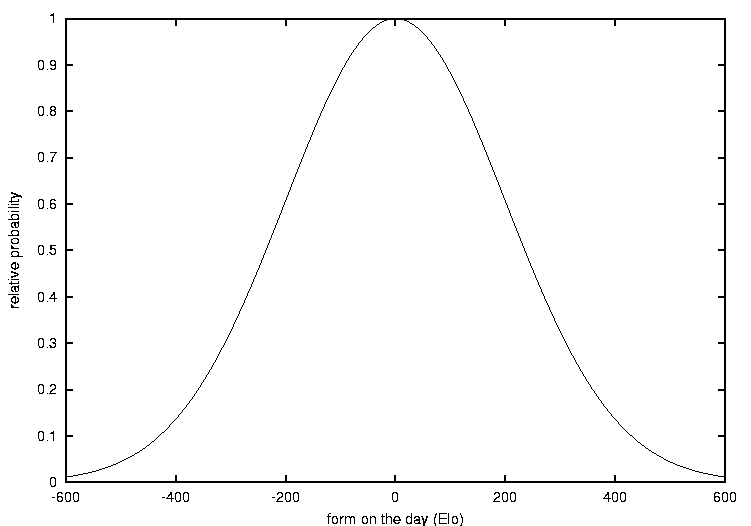
| [ < ] | [ > ] | [ << ] | [ Up ] | [ >> ] | [Top] | [Contents] | [Index] | [ ? ] |
ELO accounts the form on the day for the changing results. To establish the outcome of a game, both players determine their form on the day and add it to their rating. The player with the greatest sum wins the game.
Each player establishes his form on the day by flipping a fair(!) coin 40000 times. If a toss results in a head the form on the day is increased, otherwise it is decreased. I admit that this procedure is boring to death. Back to ELO. Those, who might think that the form on the day reaches huge values, will be disappointed. Insiders know that more than 2/3 of the values are between -200 and +200. The number 200, the square root of the number of tosses, is called class width.

Probability of having a form on the day as a function of the rating.
ELO has defined the class width to be 200. This seems to be arbitrary, and so it is. The number is a measure for the precision, with which the rating can be found out from a single game. One might think that the rating could be ascertained more precisely by lowering the class width. But because this reduces the differences of the ratings between the players in the same way, there would be no benefit. Therefore the ELO scale is used for the new rating too.
Put together in a single sentence: Rating is the measure of strength, which is measured with a precision of 200 from a single game.
Said with different words: Players, which have a rating difference of less than 200 points play in the same class. They have a good chance to win or lose against each other. If however the rating difference is beyond 200 points, the stronger player can be expected to win the game. These classes are compatible to the classes as used by FIDE / ELO-chess.
| [ < ] | [ > ] | [ << ] | [ Up ] | [ >> ] | [Top] | [Contents] | [Index] | [ ? ] |